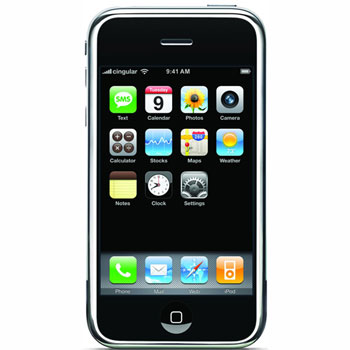If one happens to be a small business owner, especially if one happens to be the owner of a local printing company, the idea of re-inventing one’s business is probably pretty far up on the agenda these days. This is primarily because much of the business we all once enjoyed has suddenly just disappeared, as if by magic; or possibly due to the re-inventing of a much less cooperative economy.
Re-inventeration, a new word which Poor Richard thinks he has just coined, is the process of re-inventing something. Of course, the whole concept is preposterous. If something is invented the first time, does it really make any sense to try to re-invent it?
And it’s complicated. Re-inventeration is frought with Catch-22 scenarios. For those who have not read Joseph Heller’s famous book, the Catch-22 was the ultimate bureaucratic boondoggle. Catch-22 (the book) told the story of Yossarian, a WWII B-25 bombardier and his squadron, as they were forced to fly increasing numbers of bombing runs over Italy. The squadron commander, Major Major, literally embodied the concept of Catch-22. It was possible to schedule an appointment with Major Major at any time; however, one could only actually see Major Major if he was not in.
Similarly, if one was deemed insane, it was possible to get discharged from the Air Corps. Because Yossarian’s desire for discharge was deemed very sane, his insane behavior was considered by his superiors as a natural expression of his true sanity. Catch 22.
Not unlike Yossarian, Poor Richard is struggling with the Catch-22s of the re-inventeration process at his downtown Macon Gralpharaphics shop (name carefully disguised to protect the sensibilities of the franchise). The first Catch-22 is simply time. Business is down, we’ve cut back on staff, and more time is spent working in the business than on the business. Without more time to work on the business, we’ll never be able to grow the business back to a point where more folks can be hired to work in the business; relieving the requirement for the owner to fold brochures until 2 am and allowing him to use his brain once again.
The next and more worrisome set of Catch(es)-22 have to do with scope, the literal definition of the business. Behind the red awnings on Poplar Street, we’re taking jobs that we probably wouldn’t have looked at a couple of years ago. A lot of these are small and risky. The risk is that the expense in time and effort to produce the small jobs will exceed the revenue that results. Catch 22. The potential benefit is a new customer who might actually bring us a profitable job one day. Poor Richard is not sure how this one is playing out.
The low hanging fruit has been picked. We’ve responded to economic pressure on mainstay product lines by adding more products. In our case, we’ve added wide format printing and reprographics to subsidize some of the losses in conventional offset printing. These were natural additions – similar products and services to what we were already doing. They didn’t disrupt the production process much and they added little in the way of expense. Unfortunately, they did not add enough revenue to compensate for the decline in conventional printing; and these product lines are also facing economic and competitive pressures. Catch 22.
So what’s the next step? Poor Richard has written before (with misgivings) about the current buzz-phrase in the printing industry. The latest rage is for printing companies to become marketing service providers. (See Poor Richard’s post Measuring Value). Our little company is moving in this direction slowly but steadily, unsure of all of the implications, but with a sense that it is inevitable – there just aren’t many other areas of opportunity left.
Becoming a marketing service provider is full of Catch(es)-22. First, the whole notion takes us out of the realm of producing tangible products and into the area of shaping content. We’re no longer working with machinery that prints, cuts or folds stuff; but rather with electronic means of communication and the disciplines that go along with them – CSS, XHTML, Purls and a bunch of other acronyms. The competitive cost of entry into this business is low relative to the cost of a new printing press, which means that the pressure to keep ahead of the technology curve will be steep. Worse, the marketing service provider notion requires a new skill set that takes time to learn. In our case, that’s the owner’s time that is in very short supply. Catch 22.
Second, the whole idea of shaping content laps over into creating content. Printing companies are pretty good at shaping. We do layout work, color correct photos, even occasionally light editing for our customers. This is different from creating the content, an area we have generally avoided because of time limitations and a focus on keeping the machines running.
It’s just a little too hopeful to think that we might make money only by implementing marketing services — integrated direct mail and e-mail campaigns, for example. Most of our customers simply lack the time and resources to develop the content for this kind of effort, so it appears inevitable that we will be required to do some development work for them if we want to sell the services.
Hopefully we can do this without stepping on the toes of our agency customers and triggering yet another Catch 22. Ideally, the agencies might find it helpful to use our shop to implement integrated direct mail and internet campaigns for their larger customers. Our challenge will be keeping the focus on implementation (and measurement) of specific marketing services without getting customers confused about what we can do (and want to do).
Creating content, even on a limited basis, is a big step for a small printing company; but it is still a lot different from the conceptual work that our agency customers do. We can make that statement, but will our customers understand it? Another Catch-22.
Poor Richard supposes that re-inventeration, like change, is necessary and unavoidable; but he hopes he’s not re-inventing a square-wheeled tricycle.





 Posted by poor richard
Posted by poor richard 







